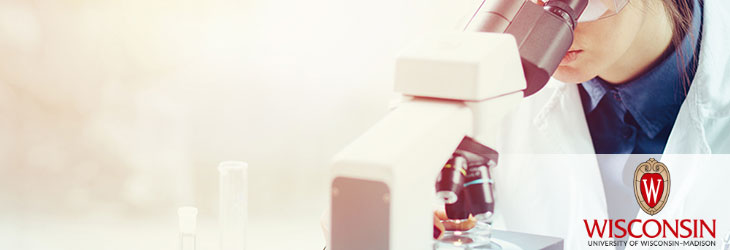Analytical Instrumentation, Methods & Materials

More Efficient and Reliable High Power Quantum Cascade Lasers
WARF: P120315US01
Inventors: Dan Botez, Jaecheol Shin
The Wisconsin Alumni Research Foundation (WARF) is seeking commercial partners interested in developing an improved design for quantum cascade laser devices that operate with lower temperature sensitivity and at higher efficiency and continuous-wave power levels.
Overview
Quantum cascade lasers (QCLs) are made of layered semiconductor materials and are suited for a variety of applications, ranging from environmental monitoring to explosives detection and missile-avoidance systems. The devices emit mid- to long-wavelength infrared radiation and their cores are produced in many stages, each stage composed of three regions: an electron injector, an active region and an electron extractor.
Conventionally, the three regions feature quantum well and barrier structures of the same alloy composition, respectively. However, these QCLs underperform. Specifically, maximum wallplug efficiency in continuous wave (CW) operation at room temperature falls far short of predicted limits. Two major challenges are electron leakage and high threshold-current density, which describes how much current is needed before a laser can start operating. Partial solutions have been proposed, but to maximize efficiencies, designs that combat both issues are needed.
Conventionally, the three regions feature quantum well and barrier structures of the same alloy composition, respectively. However, these QCLs underperform. Specifically, maximum wallplug efficiency in continuous wave (CW) operation at room temperature falls far short of predicted limits. Two major challenges are electron leakage and high threshold-current density, which describes how much current is needed before a laser can start operating. Partial solutions have been proposed, but to maximize efficiencies, designs that combat both issues are needed.
The Invention
UW–Madison researchers have developed a design to reduce threshold-current density and virtually suppress electron leakage using certain multiquantum well structures in the active regions of QCL devices. The structures are designed to work reliably over long periods of time at high efficiency and power (i.e., watt range) during quasi-continuous or continuous wave (CW) operation.
Known methods may be used to fabricate the semiconductor structure and laser devices and to form the electron injector, active region and electron extractor. The active region features a series of quantum wells and barriers of various alloy compositions. The energies of the first and second barrier in the active region are less than the third barrier.
Known methods may be used to fabricate the semiconductor structure and laser devices and to form the electron injector, active region and electron extractor. The active region features a series of quantum wells and barriers of various alloy compositions. The energies of the first and second barrier in the active region are less than the third barrier.
Applications
- Developing QCLs for environmental monitoring, aircraft and security detection
Key Benefits
- Low electron leakage
- Low threshold-current density
- High maximum wallplug efficiencies
- Long term reliability (i.e., greater than 1000 hours) at watt-range CW power levels
Additional Information
For More Information About the Inventors
Related Technologies
Publications
For current licensing status, please contact Michael Carey at [javascript protected email address] or 608-960-9867
- Botez et al. 2011. The Temperature Dependence of Key Electro-Optical Characteristics for Mid-Infrared Emitting Quantum Cascade Lasers. Proc. SPIE Novel In- Plane Semiconductor Lasers X Conf. 7953, 79530N-79530N-12.